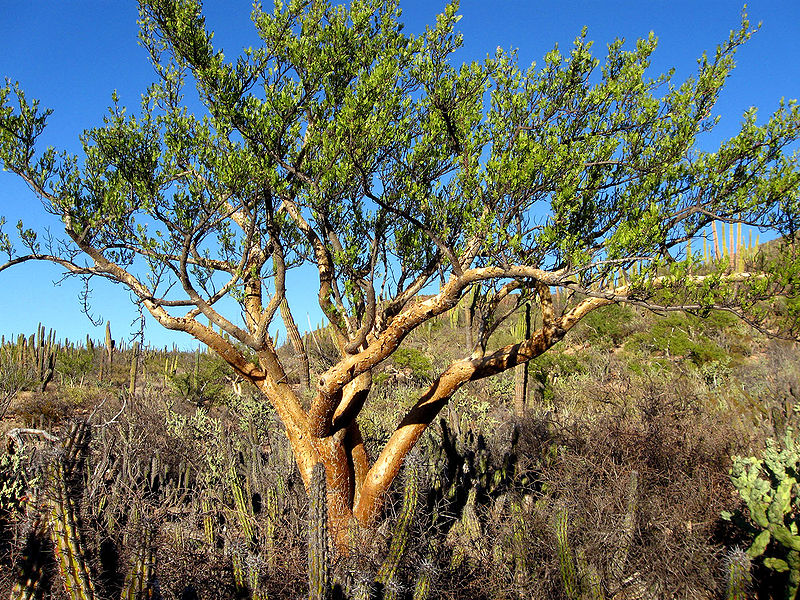
Contributor
- Topics: Archive
Trees define the California landscape, whether in the form of wind-sheared cypresses on Monterey County’s coastal bluffs, massive valley oaks studding interior valley grasslands, or palms lining the streets of Beverly Hills. They help us to know where we are. We have reviewed a number of important books on the trees of various places, such as Napa, Santa Barbara, Seattle, and San Diego, and have produced one of our own: The Trees of Golden Gate Park and San Francisco, featuring the collected writings of the late Dr Elizabeth McClintock from the first twenty-five years of this journal.
To date, however, none of these books have covered such an extensive list of trees as Trees of the California Landscape, clearly the result of a lifelong passion for the author, landscape architect Charles Hatch. Borrowing and adapting material from countless other books, he has assembled a book that will become a standard text for students of horticulture and landscape architecture, and should reside in any landscape professional’s office. It is also a valuable reference book for the home gardener, the urban planner, and the enthusiast concerned about trees in our environment, from urban to wild. Its greatest value, as a tree book, is its focus on the comparative performance of trees in the state’s various regions.
With remarkably concise text, Hatch traces a history of the land, the human landscape, and the trees of California. In a series of maps, he clarifies the relationships among the topography, geography, climate, natural vegetation, and land use within the state. He makes full use of recent methods for the classification of native vegetation, and connects each of the native trees to this system in the compendium that fills the majority of the book.
The compendium covers 107 native and 311 exotic trees that can be readily seen in California landscapes. With a page devoted to each tree, Hatch provides a full description, including habit, bark, foliage, flowers, and fruit, plus growth rate and an estimate of longevity. In addition to Sunset climate zones, he provides the temperatures at which damage or death might occur for those trees having a limited tolerance for cold. He also summarizes a tree’s usefulness in the designed landscape, and acknowledges any problems associated with its use, such as litter, fragility, invasive roots, or weedy tendencies. Plenty of coded abbreviations allow for a concise presentation of all these bits of information, although the abbreviations require flipping back to various pages in the introductory chapters to fully grasp their meaning and relevance.
Rightfully billed as a “photographic manual,” over 1,000 images help to illustrate trees in the compendium, the introductory sections, and the appendixes. Yet the image quality is often disappointing; shot in bright sunlight, the true colors of foliage and flowers are often lost or masked by harsh shadows. This is particularly frustrating, since the composition and setting of each photograph are excellent, with relatively mature trees typically shown in landscape settings where the scale of the trees can be easily appreciated.
In a tome of this size, it is, perhaps, only natural that there would be some errors. Most, fortunately, are minor, but some are pure misinformation. A final review by a botanist or horticulturist might have avoided such problems.
Of tremendous value, however, is the graphic presentation of taxonomic details in the appendix. Simple line drawings and colored renderings help readers to understand the characteristics for tree identification and classification; silhouetted photographs often accompany these graphic illustrations, to further illuminate the technical vocabulary. A thorough glossary, cross-referenced indexes of scientific and common names, and botanical keys to the genera and species of trees discussed complete an incredible reference book.
Richard G Turner, editor
Share:
Social Media
Garden Futurist Podcast
Most Popular
Videos
Topics
Related Posts

Ground Up Science for Greener Cities with Garden Futurist Dr. Alessandro Ossola
Spring 2023 Listen to the Podcast here. Alessandro Ossola is a scientist who gets very excited about the challenge of climate change allowing for an

Readying Urban Forests for Climate Realities with Garden Futurist Dr. Greg McPherson
Winter 2023 Listen to the Podcast here. “Going from the mow and blow to a more horticulturally knowledgeable approach to maintaining the landscape. And that

Welcome, Greywater, to the Garden
Summer 2022 Oh, summer: delightful warm air, tomatoes swelling on the vine, fragrant blooms on an evening stroll. When it’s warm and rainless, how is

Big Tree-Data and Big-Tree Data with Garden Futurist Matt Ritter
Summer 2022 Listen to the full Garden Futurist: Episode XV podcast here. We are in an environmental crisis right now in many parts of California









Responses